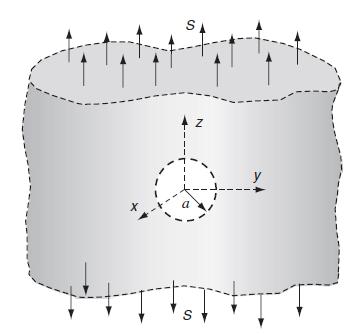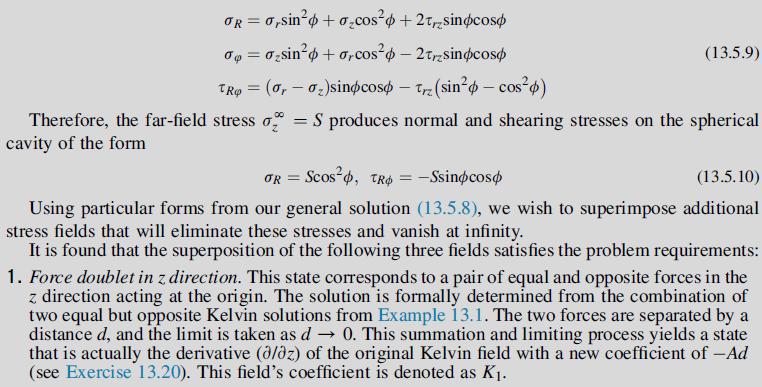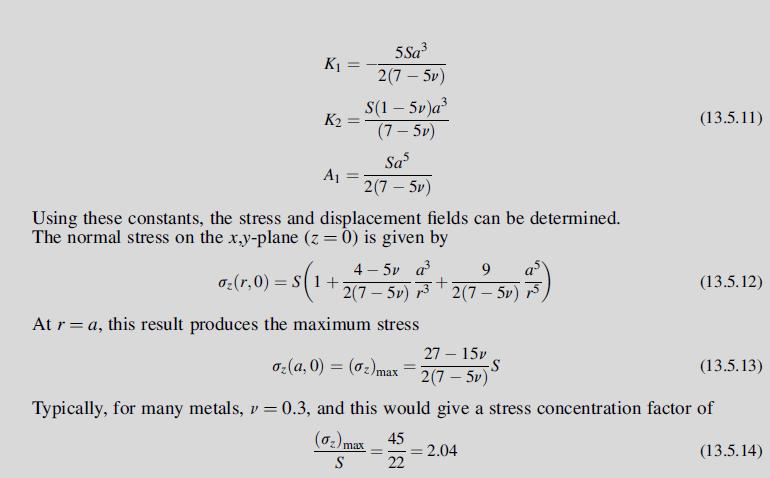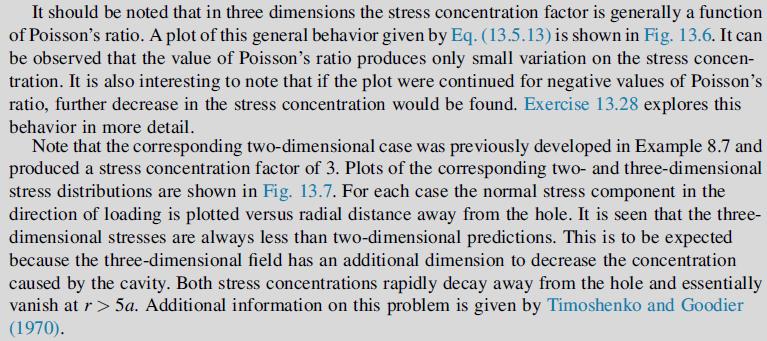Consider the three-dimensional stress concentration problem given in Example 13.5. Recall that the maximum stresses occur on
Question:
Consider the three-dimensional stress concentration problem given in Example 13.5. Recall that the maximum stresses occur on the boundary of the spherical cavity (r = a). With respect to the problem geometry shown in Fig. 13.5, the maximum stress component was found to be:

Fig 13.5

Other stress components can also be determined from the solution method outlined in the problem, and two particular components on the cavity boundary are:

a. Uniform uniaxial tension loadings of S along x and z directions:

b. Tension loading S along z axis and compression loading S along x directions:

c. Tension loadings of S along each Cartesian direction:

Data from example 13.5





Data from exercise 13.23
Using the results of Exercise 13.22, solve the problem of a stress-free spherical cavity in an infinite elastic medium under uniform far-field stress σ∞x =σ∞y = σ∞z = S. Explicitly show that the stress concentration factor for this case is K = 1.5 and compare this value with the corresponding two-dimensional case. Explain why we would expect such a difference between these two concentration factors.
Step by Step Answer:

Elasticity Theory Applications And Numerics
ISBN: 9780128159873
4th Edition
Authors: Martin H. Sadd Ph.D.





